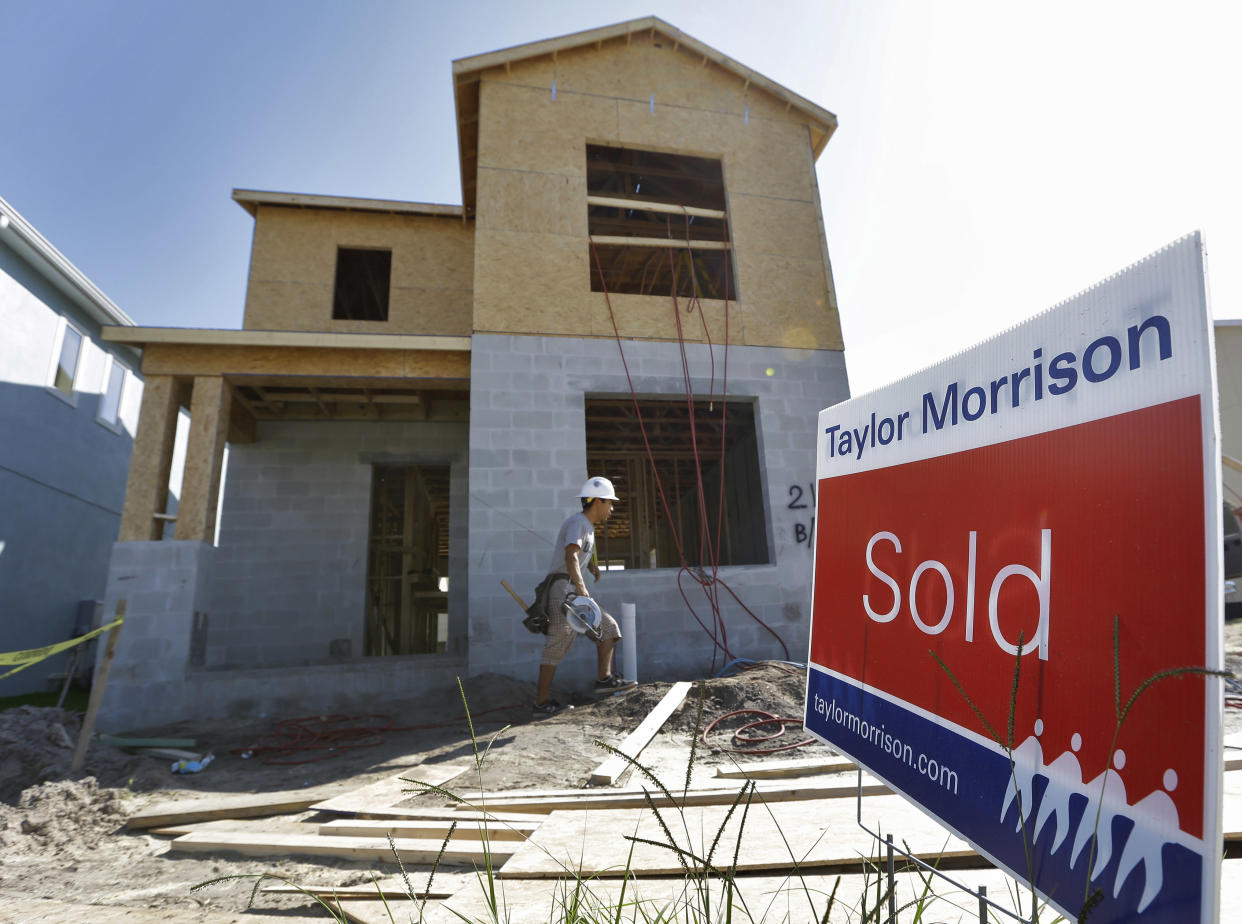Housing expert: Here’s how to ‘bring affordability back into check’ for buyers
Many homebuyers reemerged this spring after going dormant during the winter. But that doesn’t mean housing is affordable again.
"We are still not in normal affordability conditions right now," Chris Porter, chief demographer at John Burns Research and Consulting, told Yahoo Finance Live (video above). "People are still paying a greater share of their income towards housing than they have historically."
"The way you bring affordability back into check is one of three ways: You either raise incomes, you lower rates, or you lower home prices," he said.
While Porter said that incomes are still growing pretty solidly, the other two ways — mortgage rates and home prices — are the sticking factors.

Mortgage rates need to be lower
Price-conscious buyers are super sensitive to rates. That much was clear in the latest mortgage applications data after rates softened just a bit.
The volume of purchase applications saw its biggest weekly advance in three months, according to the Mortgage Bankers Association (MBA) for the week ending June 14. Overall, purchase activity jumped by 17% week over week on an unadjusted basis.
The rate on the 30-year fixed rate mortgage fell to 6.69% this week, according to Freddie Mac, down from 6.71% the week prior. Still, rates have seesawed between 6% and 7% for most of the year – keeping buyers on high alert for any sort of dip.
One inkling of good news is new economic data showing inflation cooling. That helped to cement the Federal Reserve’s decision this week to pause its aggressive rate hike campaign.
That pause means that mortgage rates could hold steady, some experts previously told Yahoo Finance, unless something significant happens in the economy.
"I think we’re not going back down to 3% rates anytime soon," Porter said. "That was indicated today in the Fed announcement, we’re not going to see the Fed funds rate come down anytime quickly. Mortgage rates are going to stay elevated beyond what people have been used to over the last several years."
Homebuilders have been using mortgage rates to their advantage with their financing arms offering buydowns to buyers who need a lower rate, Porter said.
Builders also have an advantage because of inventory problems. According to the National Association of Home Builders, 33% of homes on the market were new builds, when that share was usually 12.7% between 2000 and 2019.
"The new construction has really kind of been able to step in and represent a bigger share of the inventory available for sale," Porter said. "And that's why you see the builders doing quite well right now."

Still, by Porter’s calculations, at least 17.1 million more new homes need to be built over the next decade to meet rising demand. But construction isn’t going to happen overnight, and he is predicting a small slowdown in single-family construction over the next couple of years.
The other, big inventory problem is the lack of previously owned homes up for sale. Homeowners are reluctant to list their current home and give up their existing low mortgage rate.
"We’ve got some pretty strong demand for housing, the challenge is just the supply is not there, especially on the resale side," Porter said. "We are at very low levels of resale supply. That’s actually created a bit of a floor on how far prices could fall, at least temporarily."
The few homeowners selling in today’s market know they have the upper hand.
The median price of a single family home increased to $454,900 for the week ending June 12, Altos Research found, up from $450,000 the week prior. The prices of newly pending home sales also registered an uptick this week by 1% to $384,000.
Those kinds of prices are unaffordable for many would-be buyers.
"[We're] going to see less household formation in the short term until people can feel affordability is in their favor," Porter said, "and they can purchase a home."
Gabriella Cruz-Martinez is a personal finance reporter at Yahoo Finance. Follow her on Twitter @__gabriellacruz.
Read the latest financial and business news from Yahoo Finance
